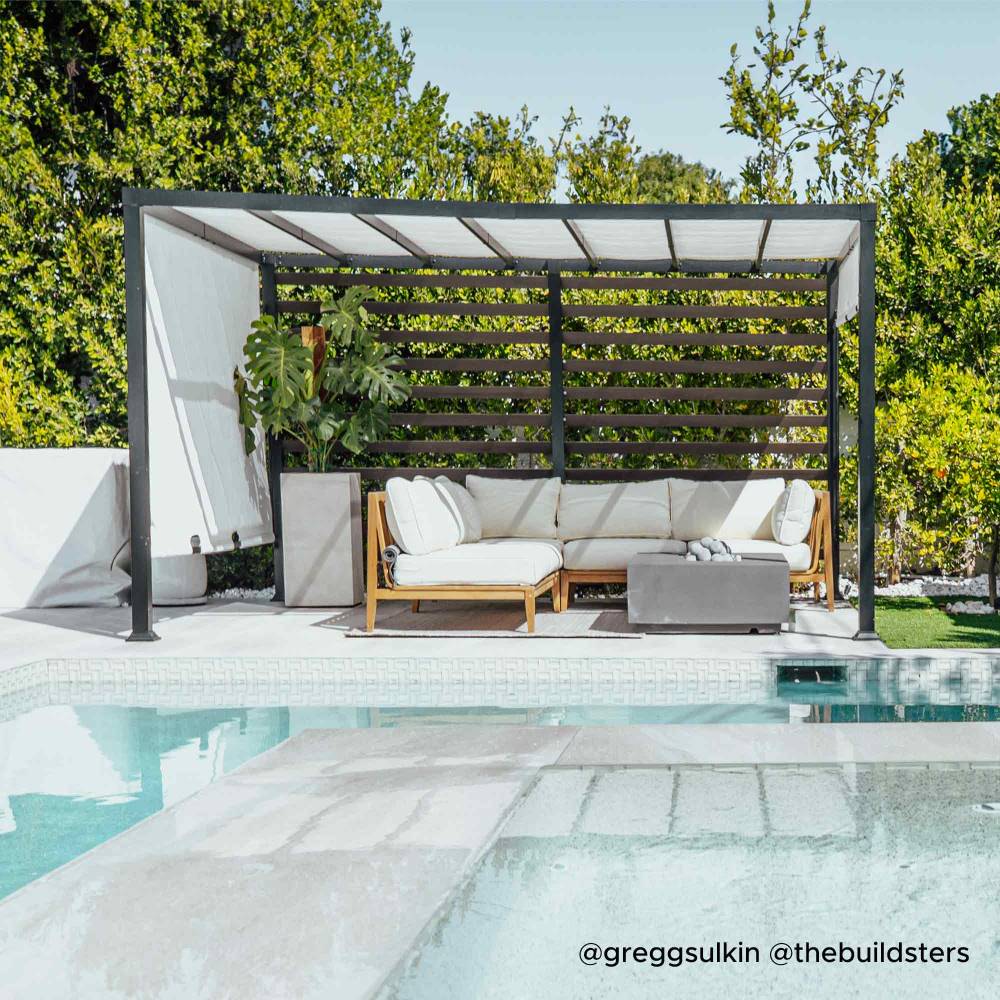Fall isn’t just a season — it’s a feeling. It’s the sound of leaves underfoot, the faint scent of wood smoke, and the golden light that turns everything softer. As the air cools, our instinct to gather grows stronger. And in those moments, the colors around us shape the atmosphere more than we realize.
Whether it’s a cozy backyard under a wood gazebo, a dinner set beneath a pergola, or a fire crackling inside a stone fireplace, warm colors — deep oranges, browns, golds, and reds — are what transform outdoor spaces into places of comfort and connection.
This isn’t just about decoration. It’s about designing emotion.
1. The Emotional Language of Warm Colors
Color psychology is a quiet but powerful storyteller.
Cool hues like blue and gray calm us — but they can also distance us. Warm tones, on the other hand, do the opposite. They pull us in.
Amber, rust, and terracotta remind us of firelight and autumn leaves. They make large spaces feel intimate and familiar. This is why they work so well for gazebos, pergolas, carports, and fire pits — structures that are naturally open and exposed to the elements.
By integrating warm tones into these settings, you create not only visual appeal but also a sensory connection. Guests won’t just see warmth — they’ll feel it.
Design Insight: The human eye reads warm colors as “closer,” which is why even open-air structures like pergolas feel more embracing when framed by autumnal hues.
2. Wooden Gazebos — Nature’s Warmest Canvas
Few materials echo fall’s beauty like wood.
A wood gazebo already carries warmth in its very structure — rich grains, earthy undertones, and a texture that glows under soft light. During fall and Thanksgiving, this natural foundation becomes the perfect base for warm décor.
You don’t need extravagant styling. Add subtle contrasts: bronze lanterns, woven blankets, and golden string lights. The goal isn’t transformation — it’s amplification.
A wood gazebo also harmonizes effortlessly with its environment. As the surrounding trees shift to shades of amber and ochre, the gazebo seems to belong to the landscape — not sit upon it.
Stylist’s Tip: Play with monochromatic layering. Combine lighter maple tones with darker walnut accents to give your structure depth without overwhelming the eye. 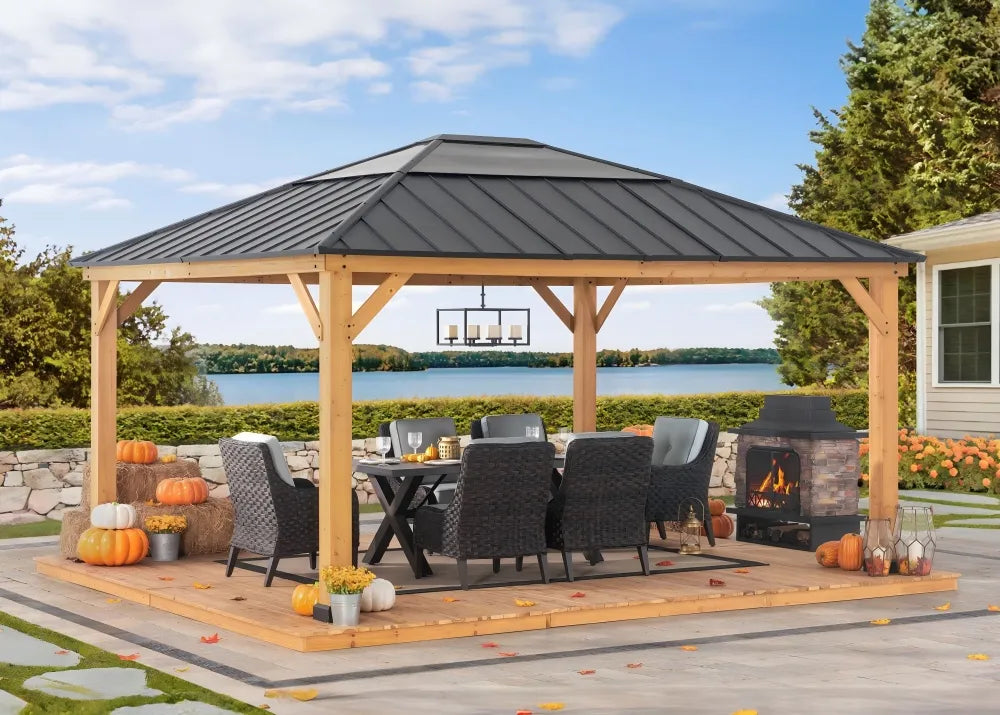
3. Metal Gazebos — Warmth Through Contrast
While wood brings organic charm, metal gazebos create a modern counterpoint. Their clean lines and cool surfaces might seem less “warm” at first glance, but that’s exactly why they thrive in fall design — contrast creates balance.
Pair dark metal frames with golden-hued curtains, rust-colored seat cushions, or soft amber lighting. The result is sophistication with soul — a fusion of modern minimalism and seasonal coziness.
Moreover, metal’s reflective properties actually enhance warmth. Firelight and lanterns shimmer off its surfaces, multiplying the sense of glow.
Visual Balance: A matte black gazebo paired with terracotta accessories feels grounded and elegant — the perfect stage for Thanksgiving gatherings that blend tradition with contemporary flair.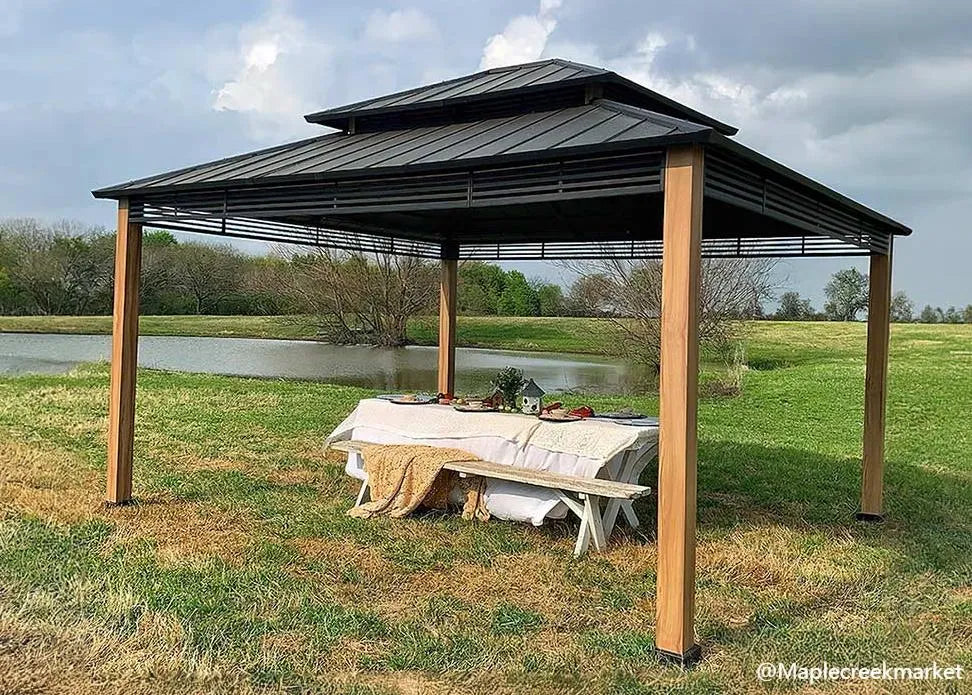
4. Pergolas — Framing Light and Shadow
If gazebos are enclosed retreats, pergolas are open invitations.
Their lattice-like roofs filter sunlight during the day and cradle string lights at night, making them perfect for layering warm tones and textures.
A pergola styled for fall isn’t about abundance — it’s about atmosphere.
Drape cinnamon-colored fabrics, weave vines with copper fairy lights, and use wicker or rattan furniture for tactile warmth. When the sun sets, every beam becomes a frame for golden light and movement.
A pergola is also the ideal structure for transition — bridging indoor and outdoor life. Its open form lets you extend Thanksgiving gatherings beyond the dining table, giving guests room to mingle under autumn skies.
Mood Trick: Position your pergola so that the setting sun filters through one side. As light passes through warm fabrics, it creates an amber glow that no artificial bulb can replicate.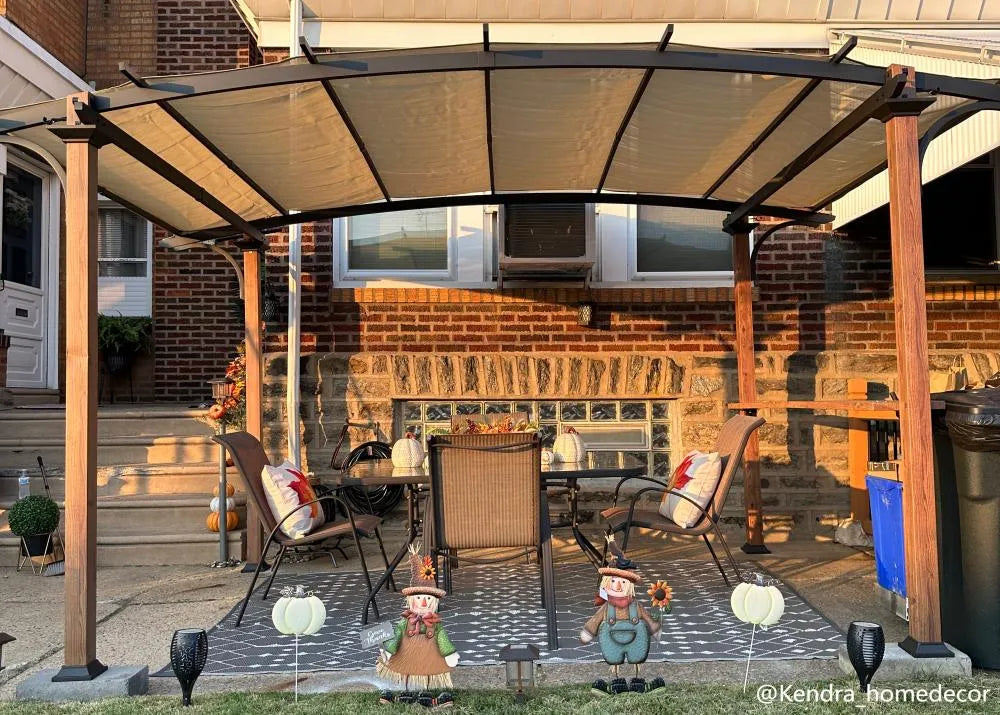
5. Carports — Function with Festive Potential
A carport might not be the first structure you think of when planning Thanksgiving décor — but it’s one of the most versatile.
During fall, it can double as an all-weather outdoor pavilion. Add hanging lights, side curtains, or even temporary paneling, and you’ve instantly transformed a practical shelter into a space for gathering, serving, or relaxing.
Carports, especially those with metal or wood finishes, take on a new character when surrounded by seasonal colors. Bronze wreaths, pumpkin centerpieces, and amber lighting can turn them from “vehicle cover” to “celebration corner.”
Creative Use: Use your carport as a covered food or beverage station during backyard parties. The structure’s natural lines provide both protection and a perfect frame for warm fall accents.
6. Fire Pits and Fireplaces — The Heart of Warmth
When it comes to Thanksgiving décor, nothing embodies warmth more literally than fire. A fire pit or fireplace acts as the emotional anchor of any outdoor setup — where people gather instinctively, drawn by both heat and light.
Firelight enhances warm colors tenfold. It deepens reds, enriches browns, and adds a natural shimmer to metal and stone. Even minimalist setups feel instantly alive when framed around flames.
For small patios, portable fire pits offer flexibility; for larger yards, outdoor fireplaces make stunning architectural statements. Either way, they turn chill into comfort and moments into memories.
Atmospheric Note: Combine firelight with nearby reflective surfaces — metal gazebos, glass lanterns, or water features — to multiply the glow and extend the sense of warmth.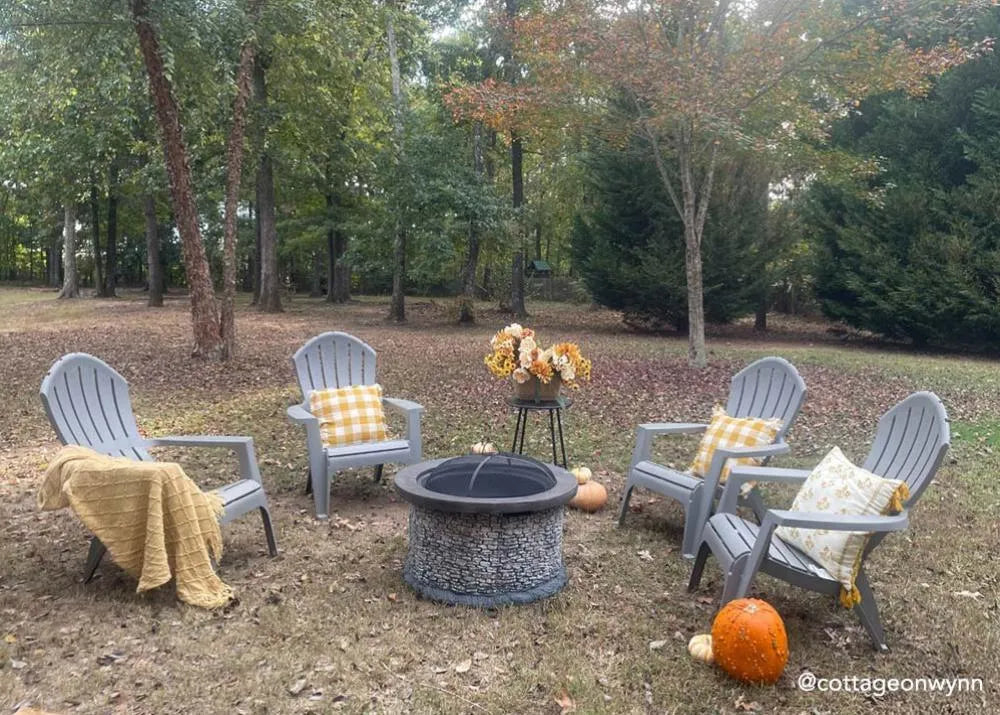
7. The Harmony of Material and Color
The beauty of fall design lies in its conversation between material and tone.
Wooden structures embrace warm hues naturally.
Metal gazebos and pergolas find warmth through lighting and fabric.
Carports blend functionality with festive creativity.
Fire pits and fireplaces anchor everything with elemental heat.
When these categories come together, the effect is symphonic — a layered, immersive environment that feels intentionally designed yet effortlessly welcoming.
Pro Tip: Always let color support function. If a space is meant for conversation, use warm neutrals to keep the energy calm. For dining areas, richer reds and copper accents stimulate appetite and interaction.
8. Beyond Aesthetic — The Emotional Resonance of Warm Design
Ultimately, warm colors do more than beautify; they bind experiences.
They remind us of family traditions, home-cooked meals, and the shared glow of community. In a season defined by gratitude, these hues feel honest — rooted in memory and emotion.
When your gazebo, pergola, carport, or fireplace carries that sense of warmth, you’re not just decorating a space — you’re nurturing connection. You’re turning architecture into atmosphere.
And that’s the real secret of great design: it doesn’t end when the lights go out; it lingers — like the last flicker of fire on a calm autumn night.






